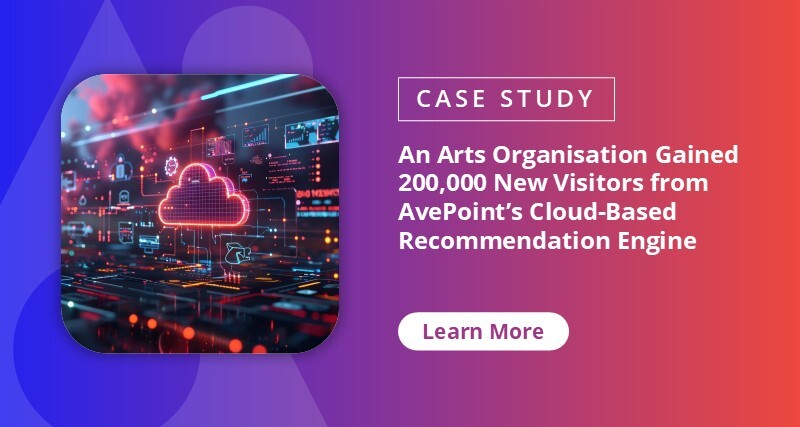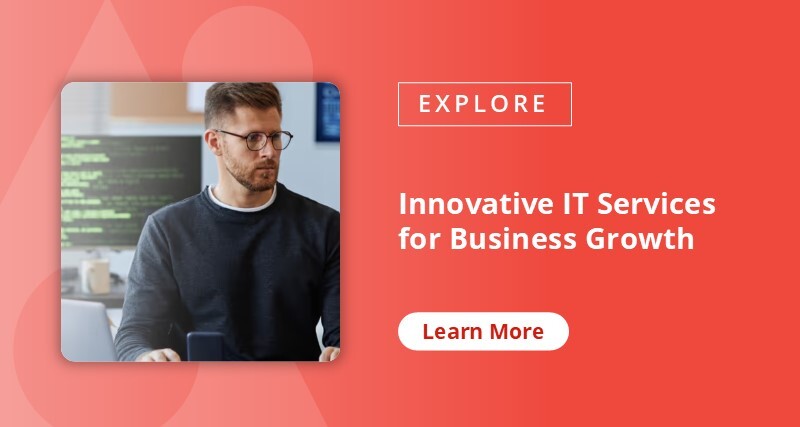Success Speaks Tech: The Integration Imperative


The boom of digital transformation and the subsequent rise of AI tools have inevitably changed both customer demands and the way businesses must use technology to deliver quality products and services. Inarguably, no company can thrive without technology, regardless of the product or service that they offer.
More companies are recognising this as, according to Gartner, worldwide IT spend grew by 7.5% to US$5.2 million in 2024. Furthermore, in 2025, 80% of CIOs are expected to increase their IT investments in “strong foundational capabilities and technologies,” Gartner found.
To emerge as a competitive player and effectively anticipate nascent market trends, it’s vital to accept that technology is now a power line that provides critical support to your various business verticals.
In this blog entry, we’ll discuss the benefits of technological integration in today’s digital age and how businesses can implement it.
3 Benefits of Tech Integration
With technological advancements and economic growth rates comprising the top common external factors influencing business objectives at 33% and 32%, respectively, integrating technology into operations is no longer a luxury but a necessity. As consumers demand more personalised products or services and more convenient transactions, businesses will also find that incorporating agility and innovation into their culture is an effective strategy that can create long-term advantages.
1. Meeting the Needs of Digital-First Customers
Consumers are more than the target market of diverse organisations in an interconnected digital ecosystem. Today, technology has redefined customer expectations, with consumers expecting faster and seamless experiences, instant access to information, and higher levels of convenience across both digital and physical channels. As a result, enterprise technology must meet consumer preferences:
Real-time engagement. Driven by high-speed internet and mobile technology, customers expect immediate access to information and services. According to a Forrester report, 79% of customers look forward to a fast response when contacting a business. Real-time responses and quick resolutions are essential, whether via customer support, product information, or service delivery.
Automation and innovation. About 50% of customers prefer self-service options like chatbots and online account management. Automation and continuous innovation are crucial to meet these evolving expectations.
Hyper-personalised experiences. Advanced analytics enable businesses to craft individualised interactions. With the right technology and channels, organisations can anticipate customer preferences, transforming generic engagement into targeted experiences.

The rapid pace at which businesses must evolve to maintain a competitive edge in today’s rapidly changing market is therefore unprecedented. Consumers are quick to observe when a business does not leverage tech or modify their business models to enhance customer experience — and they will not hesitate to find alternatives that meet their needs.
Borders, once a popular bookstore chain, first entered Singapore in 1997 along Orchard Road and rose in popularity thanks to the cozy environment it created for readers to lounge around in and enjoy — a feature that eventually made it a billion-dollar business. Borders, however, invested heavily in physical retail for far too long and made the mistake of outsourcing their web operations to Amazon rather than developing their own web strategy for selling books online or even developing technology to make reading more convenient for consumers on the go. Ironically, Amazon became a powerful contender in bookselling thanks to their Kindle e-reader, which marked a new era for readers around the world.
SISTIC, a leading ticketing service provider in Singapore, also struggled as the market evolved with the rise of online ticketing platforms and mobile apps. This led to the business shutting down as many as 11 of its 39 authorised agent counters in November 2018. As consumer preferences shifted, competitors like Ticketmaster leveraged digital ticketing so users can manage, store, and share tickets conveniently, while the Eventbrite mobile application offered features like event discovery and check-ins via QR code. Due to their slow adaptation to these changes, SISTIC inevitably experienced a significant loss of market share.
2. Staying Competitive in a Rapidly Changing Market
To stay ahead, companies do not need to overhaul their business models overnight. However, they can take calculated risks. In the interest of realising new growth targets and harnessing the latest technology, businesses can adopt a portfolio approach and dedicate a percentage of their tech budget to new technologies. According to Deloitte, organisations should allocate an estimated 26% of their tech budget to innovation. To make the most of this budget, organisations can also focus on three key areas to guide their strategic innovation:
- Rapid prototyping and pilot programs. Develop short-term, low-cost pilots with clear success metrics and scalability to validate technological innovations efficiently.
- Continuous learning and skill ecosystems. Implement training programs, foster cross-functional skills, and encourage tech certifications. Create innovation labs for employees to experiment and develop new competencies.
- Customer-centric tech assessments. Evaluate tech investments based on customer needs, mapping solutions to pain points and aligning innovations with enhanced customer experiences.
3. Adapting to Shorter Product Lifecycles
Accelerated innovation and increasing competition has significantly shortened both product and service lifecycles. Rapid advancements mean that products can become obsolete more quickly, necessitating continuous updates and new releases to stay relevant in the market.
This dynamic environment highlights the need for agility across all departments. To stay ahead, companies must swiftly respond to market opportunities and challenges, which requires a collaborative approach that integrates marketing, development, and operations to ensure timely and effective responses. This means having the necessary technology to support service and product updates as well as to scale developments as seamlessly and as quickly as possible to take advantage of the latest market trends.
The Netflix digital disruption model exemplifies successful adaptation. By leveraging technology to transition from DVD rentals to a streaming service, Netflix not only shortened its product lifecycle but also continuously innovated its content delivery, setting a benchmark for agility and responsiveness in a tech-driven market.
Practical Ways to Incorporate Technology
To effectively integrate technology into business operations, organisations can start by optimising workflows to streamline processes and enhance efficiency. A CRM system carries different functions across various business areas – such as sales, marketing, and customer support – by centralising customer data and optimising communication. This makes it easier to track and manage customer relationships. By leveraging CRM, businesses can respond quickly to both internal and customer requests, boosting service quality and enabling better data management and decision-making through automated processes.
Some organisations use CRM systems as a comprehensive case management solution to optimise their customer support workflows. By automating tasks like tracking, prioritising, and resolving inquiries, these solutions ensure a seamless and efficient process from start to finish. Beyond customer interactions, the case management capabilities of CRM systems help businesses address a range of internal and external requests, acting as a centralised hub for managing and resolving cases effectively.
To harness valuable insights that further drive informed decision-making, optimise operations, and identify new market opportunities, businesses must also use technology that reliably delivers data analytics. In the healthcare industry, for example, data analytics can improve patient care by personalising treatment plans.
Moreover, while it may be appealing to cut costs and outsource technology, organisations must fully understand the risks of this choice:
- Loss of control. Outsourcing technology means losing a degree of control over the processes and quality of work being done, which can lead to misalignment with your company’s goals and standards.
- Security risks. Sharing sensitive data with third-party vendors can expose your company to data leaks and security breaches.
- Dependency on vendors. Relying heavily on an external provider can create a dependency that might be difficult to break if the vendor faces issues or goes out of business.
- Hidden costs. Although outsourcing might initially seem cost-effective, hidden costs can arise from contract management, quality control, and additional oversight.
Conversely, maintaining an internal tech team ensures full control over the development process, aligning closely with your company’s vision and standards while enhancing data security and compliance. This team can communicate more effectively, reducing misunderstandings, and offering greater agility to respond to business needs. Their alignment with corporate culture fosters better collaboration and a cohesive work environment.
Building internal capabilities can also lead to proprietary technologies that provide a competitive market edge, ensuring long-term growth. Aligning tech advancements with business goals embeds innovation into daily operations, promoting a culture of continuous improvement. This agility enables swift responses to market changes, enhancing operational efficiency and customer experiences.
Ultimately, staying ahead in digital transformation requires spotting new market trends and driving ongoing improvements. By fostering a culture of continuous enhancement, your organisation can sustainably maintain its competitive edge and exceed customer and stakeholder expectations.

The Path Forward
Embracing technology is essential for organisations to thrive in a world powered by digital transformation. No longer just a distinct arm of business operations, technology provides critical support by enhancing customer experiences, streamlining operations, and fostering continuous innovation — making it the heartbeat of every visionary organisation.
By integrating technology into various business verticals, companies can effectively anticipate market trends, increase their agility to respond to changes, and sustainably maintain their competitive edge. This continuous flux of improvement and adaptation ensures that companies not only meet but also exceed customer and stakeholder expectations, ultimately redefining long-term growth and success.


Andie is a Content Marketing Specialist at AvePoint, covering migration, employee experience, and education technology. With 15 years of experience in B2B communications and content editing, Andie creates content that helps businesses realize the value of their technological investments.


